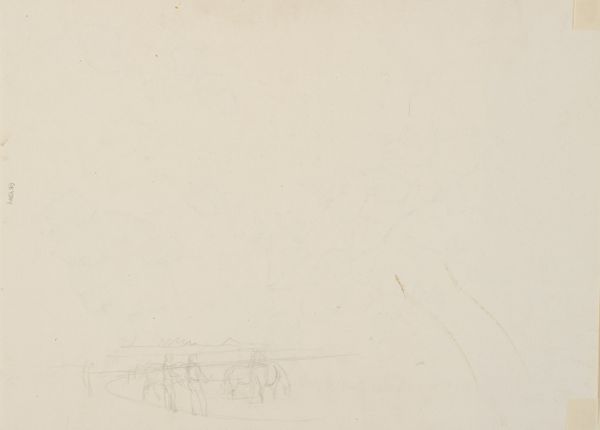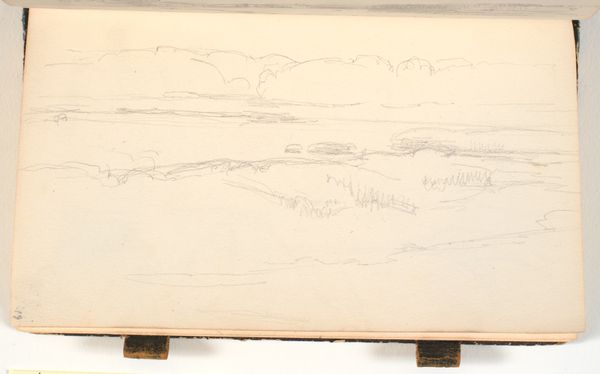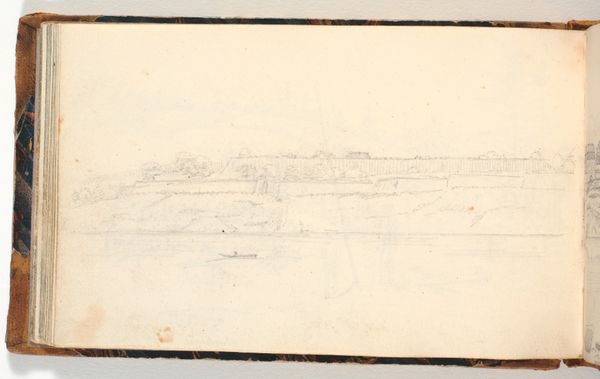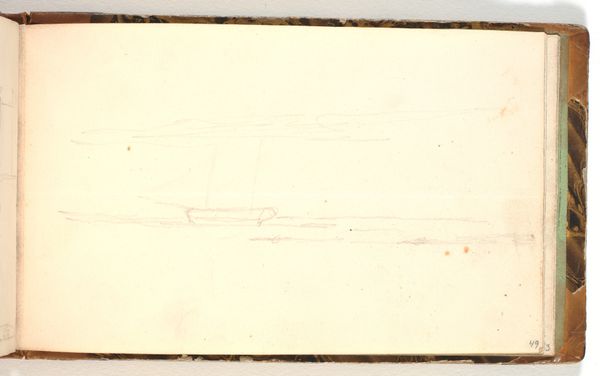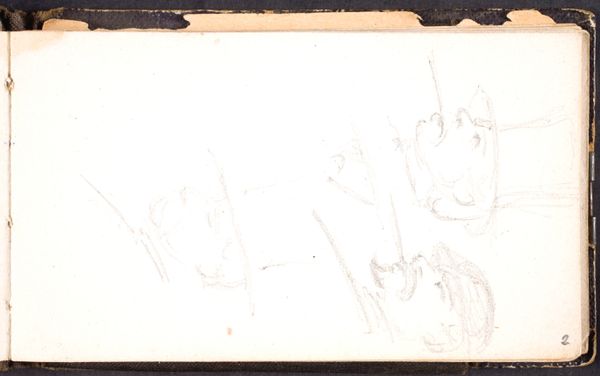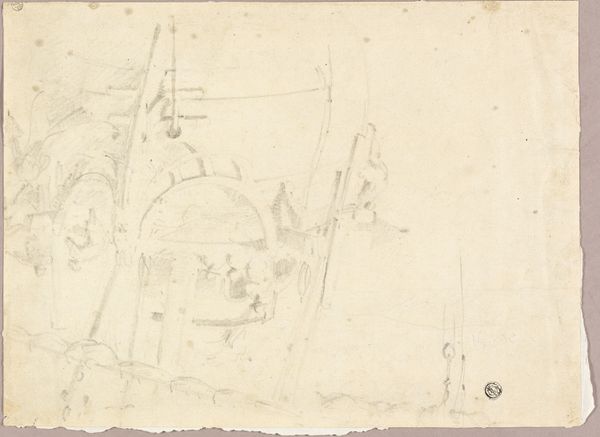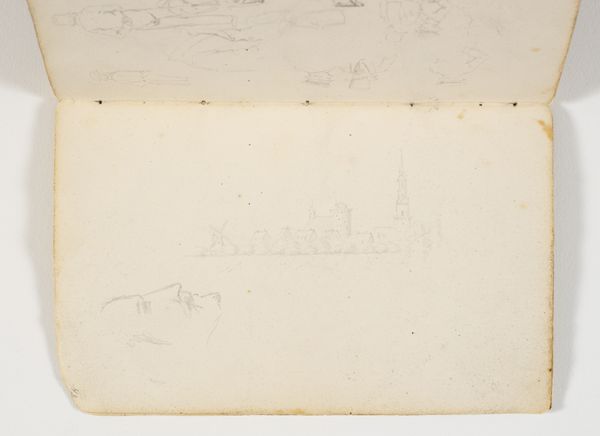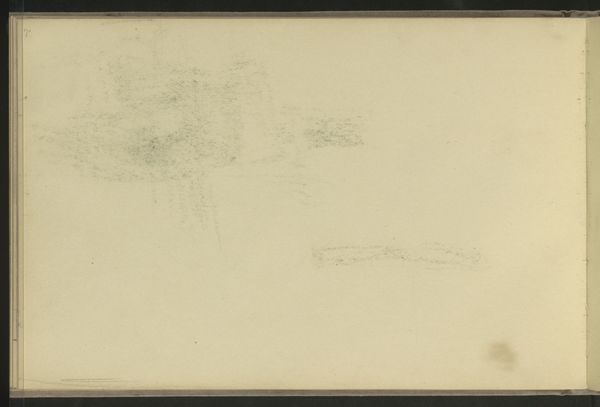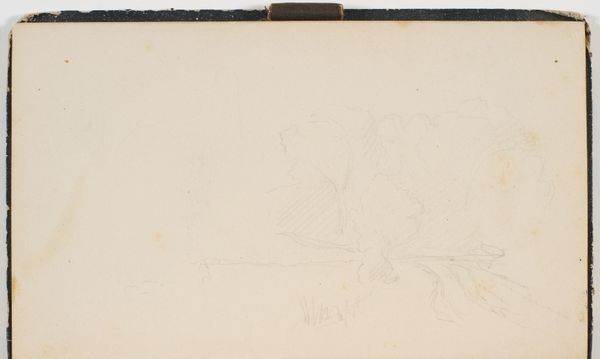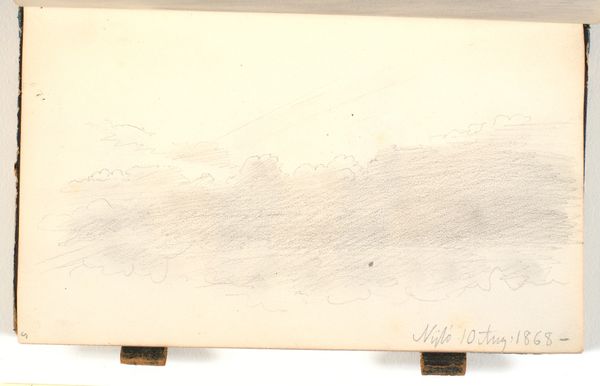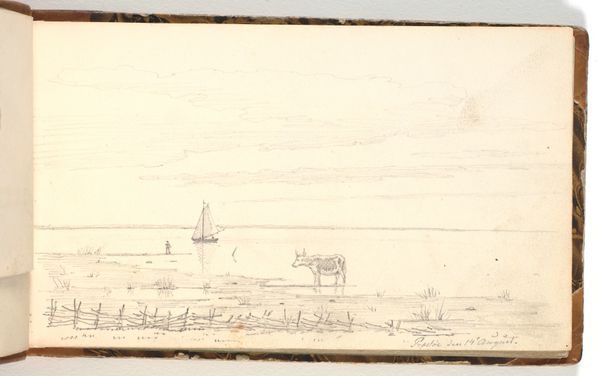
drawing, pencil
#
drawing
#
16_19th-century
#
landscape
#
pencil
#
realism
Dimensions: 227 mm (height) x 138 mm (width) (bladmål)
Curator: Looking at this page, I feel a quiet stillness. It's almost ghostly in its ethereality. Editor: It's a subtle piece, isn't it? This is "Studie af et hegn og blyantsrids", or "Study of a Fence and Pencil Sketches," made sometime between 1822 and 1848 by Christen Købke. You can find it here at the SMK. I think the real intrigue lies in how it offers such clarity of form with what seem to be just traces of pencil on paper. Curator: Agreed. And perhaps that "ghostly" feeling stems from its existence as a study—a glimpse into the artist's process, rather than a finalized statement. I am struck by the historical context; thinking about Købke’s Denmark grappling with nascent national identity, one starts to wonder how seemingly simple landscapes can carry complex cultural meaning, pointing to concepts such as ownership, division, and belonging that speak volumes. Editor: Absolutely. He was definitely working within and against prevailing traditions of landscape painting. Looking at it through a materialist lens, it's important to think about the ready availability of pencils during that period. It was during the 19th century that the mass manufacture of pencils using graphite started, which afforded even more artists, like Købke, greater freedom in experimenting outside the established studios. These material changes shifted modes of artistic practice, shaping not only subject matter, but also how and where the image was made. Curator: A great point. And that freedom potentially empowered Købke, as an individual navigating socio-political changes. In some way, the pencil as tool becomes intertwined with personal agency—an extension of thought turned to representation, accessible like never before. His subtle work reflects also back at us the slow act of looking; the fences depicted mark boundaries but can also act as the limits of what society may dictate a body should become. Editor: So true. A common material enabling subtle revolution. Curator: Yes! Considering our previous dialogues, I think it's especially vital for audiences to take pause, especially regarding the quiet revolutions material can catalyze. Editor: I concur; thank you for sharing that. The experience has given me so much to contemplate and research for the next time.
Comments
No comments
Be the first to comment and join the conversation on the ultimate creative platform.
